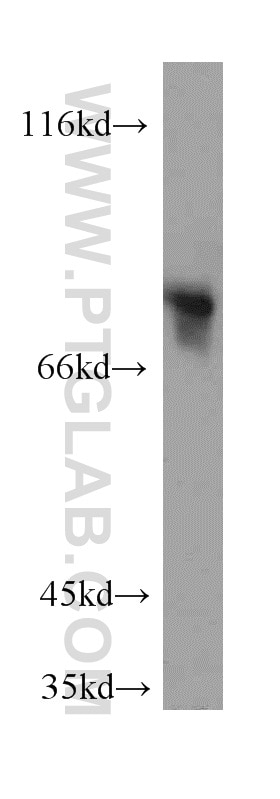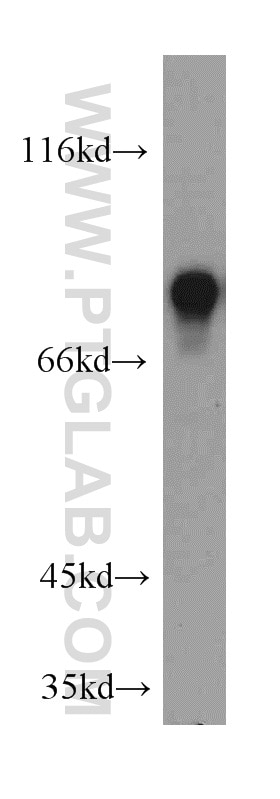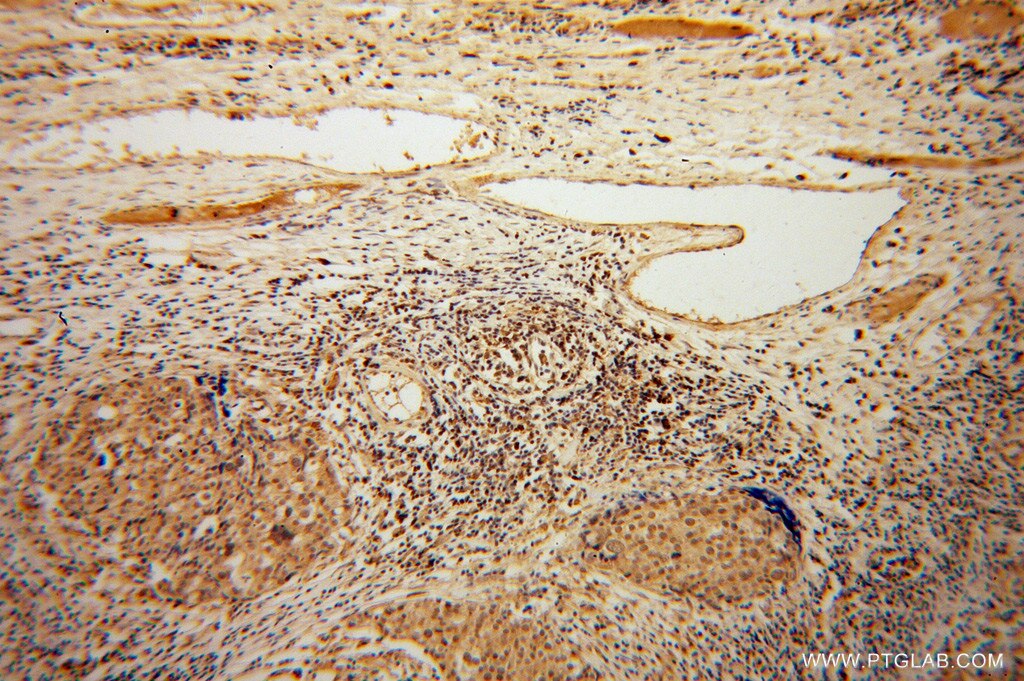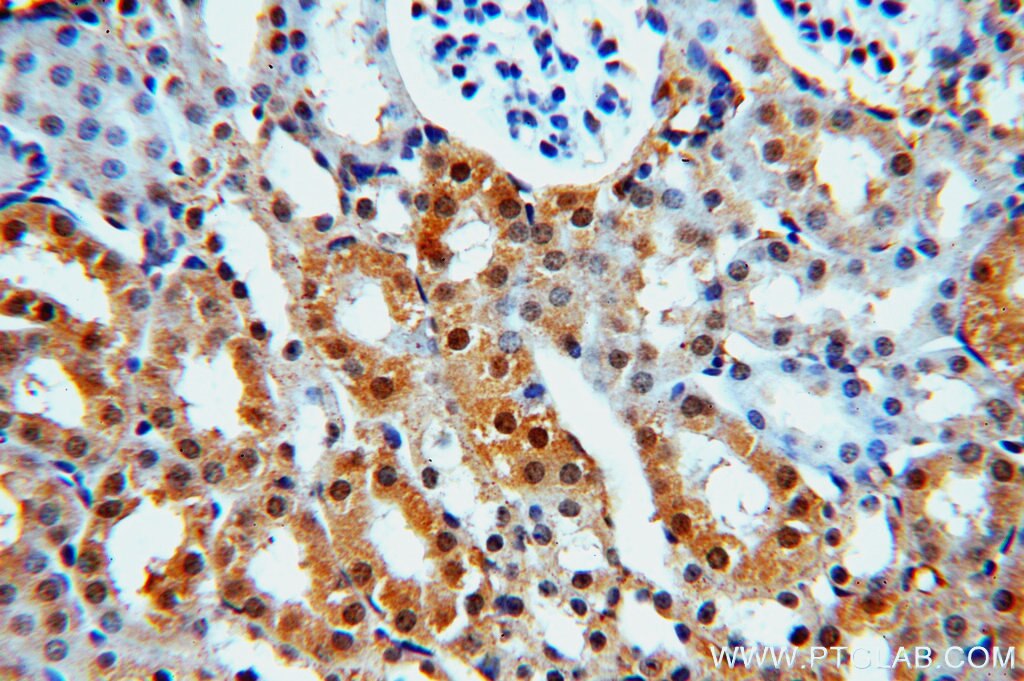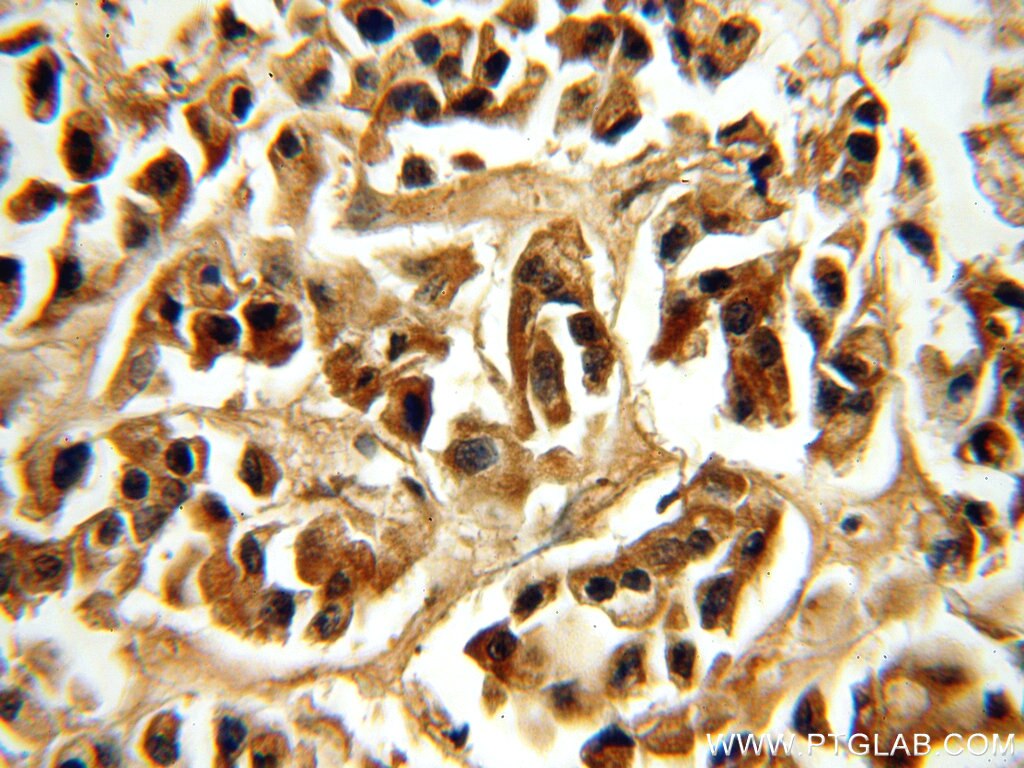- Phare
- Validé par KD/KO
Anticorps Polyclonal de lapin anti-MYST2
MYST2 Polyclonal Antibody for WB, IHC, IF/ICC, IP, ELISA
Hôte / Isotype
Lapin / IgG
Réactivité testée
Humain, rat, souris
Applications
WB, IHC, IF/ICC, IP, CoIP, ELISA
Conjugaison
Non conjugué
N° de cat : 13751-1-AP
Synonymes
Galerie de données de validation
Applications testées
| Résultats positifs en WB | cellules HeLa, cellules Jurkat, cellules MCF-7, cellules NIH/3T3, cellules PC-3, tissu testiculaire humain |
| Résultats positifs en IP | cellules HeLa |
| Résultats positifs en IHC | tissu de tumeur ovarienne humain, tissu de cancer du sein humain, tissu rénal de souris il est suggéré de démasquer l'antigène avec un tampon de TE buffer pH 9.0; (*) À défaut, 'le démasquage de l'antigène peut être 'effectué avec un tampon citrate pH 6,0. |
| Résultats positifs en IF/ICC | cellules NIH/3T3 |
Dilution recommandée
| Application | Dilution |
|---|---|
| Western Blot (WB) | WB : 1:1000-1:4000 |
| Immunoprécipitation (IP) | IP : 0.5-4.0 ug for 1.0-3.0 mg of total protein lysate |
| Immunohistochimie (IHC) | IHC : 1:20-1:200 |
| Immunofluorescence (IF)/ICC | IF/ICC : 1:50-1:500 |
| It is recommended that this reagent should be titrated in each testing system to obtain optimal results. | |
| Sample-dependent, check data in validation data gallery | |
Applications publiées
| KD/KO | See 1 publications below |
| WB | See 15 publications below |
| IHC | See 3 publications below |
| IF | See 3 publications below |
| IP | See 3 publications below |
| CoIP | See 1 publications below |
Informations sur le produit
13751-1-AP cible MYST2 dans les applications de WB, IHC, IF/ICC, IP, CoIP, ELISA et montre une réactivité avec des échantillons Humain, rat, souris
| Réactivité | Humain, rat, souris |
| Réactivité citée | Humain, souris |
| Hôte / Isotype | Lapin / IgG |
| Clonalité | Polyclonal |
| Type | Anticorps |
| Immunogène | MYST2 Protéine recombinante Ag4693 |
| Nom complet | MYST histone acetyltransferase 2 |
| Masse moléculaire calculée | 611 aa, 71 kDa |
| Poids moléculaire observé | 83 kDa |
| Numéro d’acquisition GenBank | BC032640 |
| Symbole du gène | MYST2 |
| Identification du gène (NCBI) | 11143 |
| Conjugaison | Non conjugué |
| Forme | Liquide |
| Méthode de purification | Purification par affinité contre l'antigène |
| Tampon de stockage | PBS avec azoture de sodium à 0,02 % et glycérol à 50 % pH 7,3 |
| Conditions de stockage | Stocker à -20°C. Stable pendant un an après l'expédition. L'aliquotage n'est pas nécessaire pour le stockage à -20oC Les 20ul contiennent 0,1% de BSA. |
Informations générales
MYST2, also named as HBO1, HBOa MOZ, YBF2/SAS3, SAS2 and TIP60 protein 2, belongs to the MYST (SAS/MOZ) family. It specifically represses AR mediated transcription. MYST2 is a candidate oncogene. It enhances the anchorage-independent growth of breast cancer cells.(PMID:19372580) MYST2 is a histone acetyltransferase (HAT) which could exert oncogenic function in breast cancer. It is an important downstream molecule of ERa, and ERK1/2 signaling pathway may involved in the expression of HBO1 increased by E2.
Protocole
| Product Specific Protocols | |
|---|---|
| WB protocol for MYST2 antibody 13751-1-AP | Download protocol |
| IHC protocol for MYST2 antibody 13751-1-AP | Download protocol |
| IF protocol for MYST2 antibody 13751-1-AP | Download protocol |
| IP protocol for MYST2 antibody 13751-1-AP | Download protocol |
| Standard Protocols | |
|---|---|
| Click here to view our Standard Protocols |
Publications
| Species | Application | Title |
|---|---|---|
Cancer Cell Transcriptional Regulation of the Warburg Effect in Cancer by SIX1.
| ||
Autophagy KAT7-mediated CANX (calnexin) crotonylation regulates leucine-stimulated MTORC1 activity. | ||
Cancer Res Hbo1 is a cyclin E/CDK2 substrate that enriches breast cancer stem-like cells. | ||
Mol Cell Proteomics Acetylproteomic analysis reveals functional implications of lysine acetylation in human spermatozoa (sperm). | ||
Mol Cell Proteomics Regulation of acetylation restores proteolytic function of diseased myocardium in mouse and human. | ||
Mol Cell Biol HBO1 (KAT7) Does Not Have an Essential Role in Cell Proliferation, DNA Replication, or Histone 4 Acetylation in Human Cells. |






